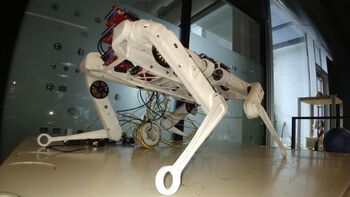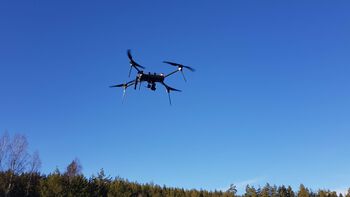Nettsider med emneord «FPGA»

The overall goal of this project is to leverage the flexibility of FPGA architecture to test algorithms and control multiple motors in robotic systems.
The development of integrated circuit technologies makes it possible to integrate complete systems on one chip consisting of microprocessors, RAM, dedicated digital modules as well as analogue elements like sensor front-ends, RF modules and power regulators, image pixels, MEMS-structures (pressure sensors, mechanical switches, accelerometers), high quality coils and capacitors etc. This is known as System on Chip (SoC). Development of a SoC is done in several steps where the different modules are developed and verified in different devices before they may be combined into one circuit.
The development of integrated circuit technologies makes it possible to integrate complete systems on one chip consisting of microprocessors, RAM, dedicated digital modules as well as analogue elements like sensor front-ends, RF modules and power regulators, image pixels, MEMS-structures (pressure sensors, mechanical switches, accelerometers), high quality coils and capacitors etc. This is known as System on Chip (SoC). Development of a SoC is done in several steps where the different modules are developed and verified in different devices before they may be combined into one circuit.

At the nanoelectronics group we have recently produced an integrated CMOS chip with a micro-electrode array (MEA) on it's surface for the purpose of measuring bio-impedance of biological cell cultures. The principle of measuring bio-impedance is to measure detailed electrical properties of biological samples. The presence of certain molecules has an influence on these electrical properties and one can thus for instance indirectly detect blood glucose or other substances. Even more suited are structural and physiological changes in the cell cultures. It's for example possible to distinguish a healthy cell culture from one that is straining, or to simply monitor the growth of a cell culture.

At the nanoelectronics group we have recently produced an integrated CMOS chip with a micro-electrode array (MEA) on it's surface for the purpose of measuring bio-impedance of biological cell cultures. The principle of measuring bio-impedance is to measure detailed electrical properties of biological samples. The presence of certain molecules has an influence on these electrical properties and one can thus for instance indirectly detect blood glucose or other substances. Even more suited are structural and physiological changes in the cell cultures. It's for example possible to distinguish a healthy cell culture from one that is straining, or to simply monitor the growth of a cell culture.
What is the best way for a robot to tackle challenging surfaces? Prediction? Sensor data? AI processing? Parallell computing?
Design of FPGA that emulates digital video output from CMOS image sensor with programmable signal/noise ratio

COMPET is a research project dedicated to build a high resolution, high sensitivity and MRI compatible PET scanner.

COMPET er et forskningsprosjekt som skal implementere en pre-klinisk MRI kompatibel PET-skanner med høy oppløsning og høy sensitivitet.

Our goal is to contribute to the development of ever more intelligent systems. This can be systems that in specific tasks or environments can assist or replace human judgment, or it can be systems that can accomplish tasks we would like to automate.





